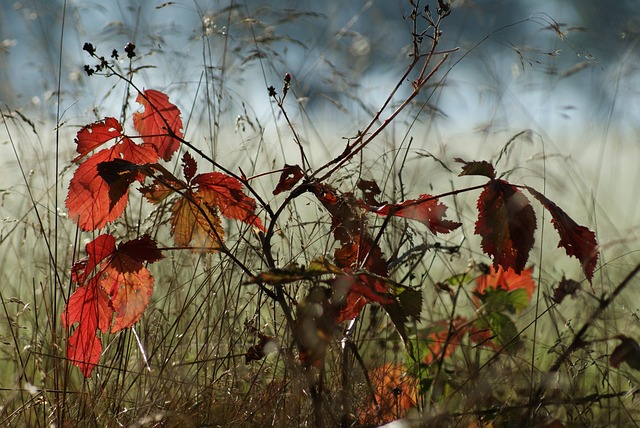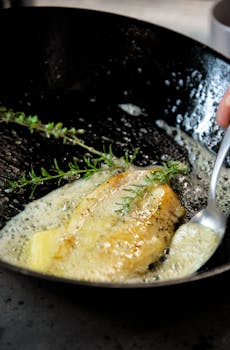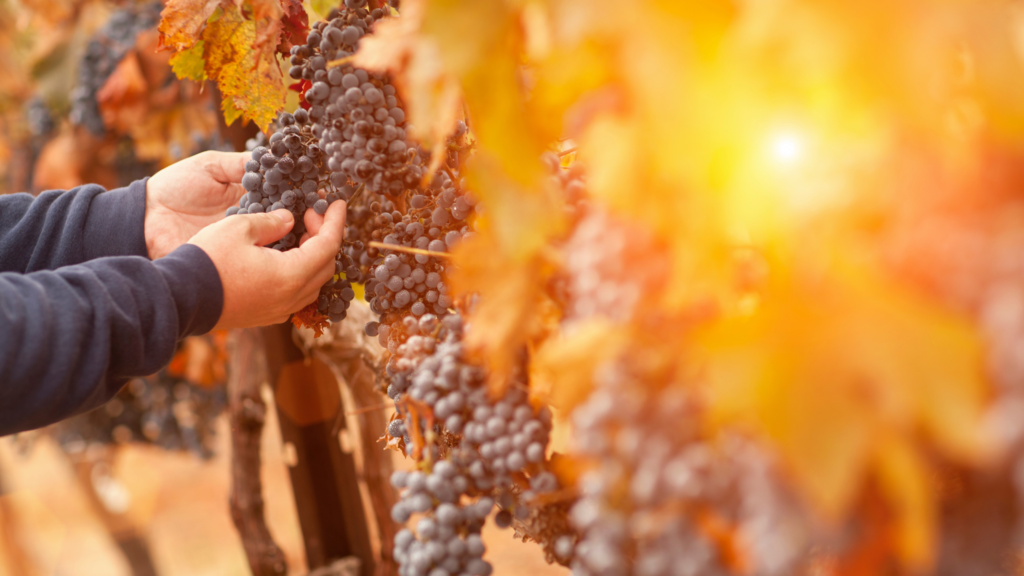-
Table of Contents
- The History and Origins of Meunier Grape
- Exploring the Flavor Profile of Meunier Wines
- Food Pairing Ideas for Meunier Wines
- The Role of Meunier in Champagne Production
- Meunier vs. Pinot Noir: A Comparative Analysis
- Sustainable Viticulture Practices for Meunier Grape
- Meunier Wines from Different Regions: A Tasting Guide
- Aging Potential of Meunier Wines: What to Expect
- Meunier Blends: Discovering the Perfect Balance
- Q&A
The sommelier suggests… Meunier by Roberto Duran: Unveiling the artistry of wine.
The sommelier suggests “Meunier” by Roberto Duran.
The History and Origins of Meunier Grape
The Meunier grape, also known as Pinot Meunier, is a variety that holds a significant place in the world of winemaking. This grape is primarily grown in the Champagne region of France and is one of the three main grape varieties used in the production of Champagne, alongside Chardonnay and Pinot Noir. The history and origins of the Meunier grape are fascinating, and understanding its background can enhance our appreciation for the wines it produces.
The origins of the Meunier grape can be traced back to the 16th century in the Champagne region. It is believed to be a mutation of Pinot Noir, another prominent grape variety in the region. The name “Meunier” translates to “miller” in French, which refers to the white, flour-like dust that covers the leaves of the grapevine, resembling the appearance of a miller’s hands. This unique characteristic of the grape is what gave it its name.
The Meunier grape quickly gained popularity in the Champagne region due to its ability to thrive in cooler climates and its resistance to diseases such as powdery mildew. These qualities made it an ideal choice for winemakers in the region, who were often faced with challenging weather conditions. The grape’s adaptability and reliability allowed winemakers to consistently produce high-quality wines, even in less favorable years.
Over the years, the Meunier grape has become an integral part of the Champagne blend. It adds a distinct character to the wines, contributing flavors of red fruits, such as raspberries and strawberries, as well as floral and spicy notes. The Meunier grape also brings a certain roundness and suppleness to the wines, balancing out the acidity and adding depth to the overall flavor profile.
While the Meunier grape is primarily associated with Champagne, it is also grown in other regions around the world, albeit on a smaller scale. In recent years, winemakers in countries such as Germany, Switzerland, and the United States have started experimenting with this grape variety, recognizing its potential to produce exceptional wines outside of Champagne.
Despite its popularity and success, the Meunier grape has faced some challenges throughout history. In the early 20th century, there was a decline in the cultivation of this grape due to the phylloxera epidemic, which devastated vineyards across Europe. However, thanks to the efforts of dedicated winemakers and the resilience of the grape, it made a comeback and regained its position as a key player in the world of winemaking.
In conclusion, the Meunier grape has a rich history and fascinating origins. Its unique characteristics and ability to thrive in challenging conditions have made it an essential component of Champagne production. The flavors and qualities it brings to the wines have earned it a well-deserved place in the hearts of wine enthusiasts worldwide. Whether enjoyed on its own or as part of a blend, Meunier wines are a testament to the skill and craftsmanship of winemakers who have embraced this grape variety.
Exploring the Flavor Profile of Meunier Wines
Meunier, a lesser-known grape variety, is gaining popularity among wine enthusiasts for its unique flavor profile. This grape, also known as Pinot Meunier, is primarily grown in the Champagne region of France, where it is used as one of the three main grape varieties in the production of Champagne. However, Meunier is not limited to Champagne and can be found in other regions as well.
One of the distinguishing characteristics of Meunier wines is their fruit-forwardness. Unlike its counterparts, Pinot Noir and Chardonnay, Meunier wines tend to have a more pronounced fruitiness. This is due to the grape’s natural high acidity and its ability to retain its fruity flavors even after fermentation. The result is a wine that is vibrant and refreshing, with notes of red berries, cherries, and sometimes even tropical fruits.
Another notable aspect of Meunier wines is their versatility. While they are often used as a blending grape in Champagne, Meunier can also stand on its own as a single varietal wine. In recent years, winemakers have been experimenting with Meunier to create unique and expressive wines that showcase the grape’s true potential. These wines can range from light and delicate to rich and full-bodied, depending on the winemaker’s style and the terroir in which the grapes are grown.
When it comes to food pairings, Meunier wines offer a wide range of possibilities. Their fruit-forwardness and acidity make them a great match for a variety of dishes. For lighter Meunier wines, such as those with delicate red fruit flavors, try pairing them with grilled fish or roasted chicken. The wine’s acidity will help cut through the richness of the meat, while the fruitiness will complement the flavors.
For richer and more full-bodied Meunier wines, consider pairing them with heartier dishes such as roasted lamb or beef stew. The wine’s bold flavors and tannins will stand up to the richness of the meat, creating a harmonious pairing. Additionally, Meunier wines can also be enjoyed on their own as an aperitif or paired with a cheese platter.
In terms of aging potential, Meunier wines are generally meant to be enjoyed in their youth. While some high-quality Meunier wines can age gracefully for a few years, they are best consumed within the first few years of their release to fully appreciate their vibrant fruit flavors. However, it is worth noting that there are exceptions to this rule, and some Meunier wines from exceptional vintages and producers can age beautifully.
In conclusion, Meunier wines offer a unique and exciting flavor profile that sets them apart from other grape varieties. With their fruit-forwardness, versatility, and ability to pair well with a variety of dishes, Meunier wines are a great choice for both casual wine drinkers and connoisseurs alike. So, the next time you’re looking to explore something new, consider trying a Meunier wine and discover the hidden gem that this grape has to offer.
Food Pairing Ideas for Meunier Wines
Meunier wines are often overlooked in favor of their more famous counterparts, Pinot Noir and Chardonnay. However, these wines have a unique character and flavor profile that make them a perfect choice for food pairing. In this article, we will explore some food pairing ideas for Meunier wines, with the guidance of a sommelier.
Meunier wines are known for their fruity and earthy flavors, with notes of red berries, cherries, and mushrooms. These flavors make them a great match for a variety of dishes, from light salads to hearty stews. One of the sommelier’s top recommendations for pairing with Meunier wines is roasted duck breast with a cherry reduction.
The rich and gamey flavors of the duck complement the fruity notes of the wine, while the cherry reduction adds a touch of sweetness that balances out the earthiness. This combination creates a harmonious and satisfying dining experience.
Another great pairing idea for Meunier wines is mushroom risotto. The earthy flavors of the mushrooms echo the earthiness of the wine, creating a seamless connection between the food and the drink. The creamy texture of the risotto also helps to soften any tannins in the wine, allowing its flavors to shine through.
For those looking for a lighter option, the sommelier suggests pairing Meunier wines with a beet and goat cheese salad. The earthy sweetness of the beets pairs well with the wine’s fruity notes, while the tangy goat cheese adds a creamy and savory element to the dish. This combination is both refreshing and satisfying, making it a perfect choice for a summer meal.
If you’re in the mood for something more indulgent, the sommelier recommends pairing Meunier wines with a truffle pasta dish. The earthy and aromatic flavors of the truffles complement the wine’s earthiness, creating a luxurious and decadent pairing. The richness of the pasta also helps to balance out any acidity in the wine, allowing its flavors to shine through.
For those with a sweet tooth, Meunier wines can also be paired with desserts. One of the sommelier’s favorite pairings is a dark chocolate mousse. The rich and intense flavors of the chocolate complement the wine’s fruity notes, creating a decadent and indulgent combination. The sommelier also suggests trying Meunier wines with a berry tart, as the wine’s fruity flavors will enhance the sweetness of the berries.
In conclusion, Meunier wines are a versatile and underrated choice for food pairing. Their fruity and earthy flavors make them a great match for a variety of dishes, from roasted duck to mushroom risotto. Whether you’re looking for a light and refreshing option or a more indulgent pairing, Meunier wines have something to offer. So next time you’re in the mood for a glass of wine, consider reaching for a bottle of Meunier and try one of these delicious food pairing ideas.
The Role of Meunier in Champagne Production

The Role of Meunier in Champagne Production
When it comes to Champagne production, the role of Meunier cannot be underestimated. This grape variety, also known as Pinot Meunier, plays a crucial role in adding complexity and balance to the final product. In this article, we will explore the characteristics of Meunier and its significance in the world of Champagne.
Meunier is one of the three main grape varieties used in Champagne production, alongside Chardonnay and Pinot Noir. While Chardonnay brings elegance and finesse, and Pinot Noir contributes structure and depth, Meunier adds a unique touch to the blend. It is often described as the “workhorse” of Champagne, as it is more resistant to frost and disease, making it easier to cultivate.
One of the key characteristics of Meunier is its fruity and aromatic profile. It is known for its vibrant red fruit flavors, such as cherry and strawberry, which add a refreshing and lively element to the Champagne. These fruity notes are often complemented by hints of spice and floral undertones, creating a complex and multi-dimensional flavor profile.
Meunier also plays a crucial role in balancing the acidity of Champagne. While Chardonnay and Pinot Noir can be quite high in acidity, Meunier has a slightly lower acidity level, which helps to soften the overall blend. This balance is essential in creating a harmonious and well-rounded Champagne that is enjoyable to drink.
Furthermore, Meunier contributes to the texture and mouthfeel of Champagne. It adds a certain roundness and suppleness to the wine, making it feel smooth and velvety on the palate. This texture is particularly important in non-vintage Champagnes, where Meunier is often used to create a consistent and approachable style.
In addition to its role in blending, Meunier is also gaining recognition as a standalone varietal in Champagne. Some producers are now experimenting with producing single-varietal Meunier Champagnes, showcasing the unique characteristics of this grape. These Champagnes often exhibit a more pronounced fruitiness and a distinct personality that sets them apart from traditional blends.
Overall, Meunier is an essential component in Champagne production, bringing its own set of characteristics and qualities to the final blend. Its fruity and aromatic profile, balanced acidity, and textural contribution make it a valuable grape variety in creating a well-rounded and enjoyable Champagne.
Next time you enjoy a glass of Champagne, take a moment to appreciate the role of Meunier in its creation. Whether it is adding a burst of red fruit flavors or providing a smooth and velvety texture, Meunier plays a vital part in making Champagne the iconic and beloved beverage that it is today. So, the next time you’re browsing the Champagne section, consider trying a bottle that highlights the unique qualities of Meunier. You might just discover a new favorite.
Meunier vs. Pinot Noir: A Comparative Analysis
Meunier vs. Pinot Noir: A Comparative Analysis
When it comes to red wine, two grape varieties often find themselves in the spotlight: Meunier and Pinot Noir. Both are known for their unique characteristics and are widely used in winemaking. In this article, we will delve into the differences between Meunier and Pinot Noir, exploring their origins, flavors, and ideal food pairings. So, sit back, relax, and let the sommelier guide you through this comparative analysis.
Let’s start with Meunier, also known as Pinot Meunier. This grape variety is primarily grown in the Champagne region of France and is one of the three main grapes used in Champagne production, alongside Chardonnay and Pinot Noir. Meunier is known for its fruity and approachable nature, making it a popular choice for blending in Champagne. It adds a touch of freshness and roundness to the final blend, balancing out the acidity of Chardonnay and the structure of Pinot Noir.
In terms of flavor, Meunier often exhibits notes of red berries, such as raspberries and strawberries, with a hint of spice. Its lighter body and softer tannins make it an easy-drinking wine that can be enjoyed on its own or paired with a variety of dishes. The sommelier suggests trying Meunier with roasted chicken, grilled salmon, or even a mushroom risotto. Its versatility and ability to complement a wide range of flavors make it a go-to choice for many wine enthusiasts.
On the other hand, we have Pinot Noir, a grape variety that needs no introduction. Originating from the Burgundy region of France, Pinot Noir is renowned for its elegance and complexity. It is often described as a “fickle” grape, as it is sensitive to climate and soil conditions, requiring meticulous care and attention in the vineyard. However, when grown in the right conditions, Pinot Noir can produce exceptional wines that showcase its true potential.
Pinot Noir is known for its red fruit flavors, such as cherries and cranberries, with earthy undertones and a silky texture. It tends to have higher acidity and more pronounced tannins compared to Meunier, giving it a longer aging potential. The sommelier recommends pairing Pinot Noir with dishes such as roasted duck, grilled lamb, or a classic beef bourguignon. Its complexity and depth of flavor make it a perfect match for rich and hearty dishes.
While Meunier and Pinot Noir share some similarities, such as their red fruit flavors and their use in Champagne production, they also have distinct characteristics that set them apart. Meunier is known for its approachability and freshness, making it a great choice for everyday enjoyment. Pinot Noir, on the other hand, offers complexity and elegance, making it a favorite among wine connoisseurs.
In conclusion, Meunier and Pinot Noir are two grape varieties that deserve recognition for their unique qualities. Whether you prefer the fruity and easy-drinking nature of Meunier or the complexity and elegance of Pinot Noir, both wines have something to offer. So, the next time you find yourself in a wine shop or a restaurant, don’t hesitate to ask the sommelier for their recommendation. They might just suggest a Meunier or Pinot Noir that will take your wine experience to new heights. Cheers!
Sustainable Viticulture Practices for Meunier Grape
The sommelier suggests… Meunier by Roberto Duran
Sustainable Viticulture Practices for Meunier Grape
When it comes to sustainable viticulture practices, the Meunier grape is a shining example. This grape variety, also known as Pinot Meunier, is primarily grown in the Champagne region of France and is one of the three main grape varieties used in the production of Champagne. Its unique characteristics and adaptability make it an ideal choice for sustainable viticulture.
One of the key reasons why Meunier is well-suited for sustainable viticulture is its resistance to diseases and pests. This grape variety has a natural resistance to powdery mildew, which is a common fungal disease that affects grapevines. By planting Meunier, vineyard owners can reduce the need for chemical treatments, thus minimizing the environmental impact of their operations.
In addition to its disease resistance, Meunier is also known for its ability to thrive in cooler climates. This means that it requires less water and irrigation compared to other grape varieties. By reducing water usage, vineyard owners can conserve this precious resource and contribute to sustainable farming practices.
Furthermore, Meunier has a relatively short growing season, which allows it to ripen earlier than other grape varieties. This is advantageous for several reasons. Firstly, it reduces the risk of frost damage, which can be detrimental to grapevines. Secondly, it allows vineyard owners to harvest the grapes earlier, thus avoiding potential weather-related challenges later in the season.
Another sustainable viticulture practice that is commonly employed for Meunier is cover cropping. Cover crops, such as legumes or grasses, are planted between the rows of grapevines to improve soil health and prevent erosion. These cover crops help to retain moisture in the soil, reduce the need for synthetic fertilizers, and promote biodiversity in the vineyard.
Furthermore, Meunier is often grown using organic or biodynamic farming methods. Organic farming avoids the use of synthetic pesticides and fertilizers, relying instead on natural alternatives. Biodynamic farming takes this a step further by incorporating holistic practices that consider the vineyard as a whole ecosystem. Both of these approaches prioritize the health of the soil, the vine, and the surrounding environment.
In conclusion, Meunier is a grape variety that lends itself well to sustainable viticulture practices. Its natural disease resistance, adaptability to cooler climates, and short growing season make it an ideal choice for environmentally conscious vineyard owners. By employing practices such as cover cropping and organic or biodynamic farming, vineyard owners can further enhance the sustainability of their operations. So, the next time you’re looking for a sustainable wine option, consider Meunier by Roberto Duran. Cheers to a greener future!
Meunier Wines from Different Regions: A Tasting Guide
Meunier Wines from Different Regions: A Tasting Guide
When it comes to exploring the world of wine, there is always something new and exciting to discover. One grape variety that often flies under the radar is Meunier, also known as Pinot Meunier. While it may not have the same level of recognition as its famous cousin, Pinot Noir, Meunier wines have a unique character and charm that should not be overlooked. In this tasting guide, we will explore Meunier wines from different regions, highlighting their distinct qualities and suggesting a standout bottle from Roberto Duran.
Meunier, a black grape variety, is primarily grown in the Champagne region of France. It is one of the three main grape varieties used in Champagne production, alongside Chardonnay and Pinot Noir. While Meunier often plays a supporting role in Champagne blends, it can also shine on its own, showcasing its fruity and approachable nature.
In Champagne, Meunier wines are known for their vibrant red fruit flavors, such as cherry and raspberry, as well as their lively acidity. They tend to be medium-bodied with a smooth texture, making them incredibly enjoyable to drink. These wines are perfect for those who appreciate a more accessible and fruit-forward style of Champagne.
Moving beyond Champagne, Meunier is also cultivated in other regions around the world. One notable example is the Ahr Valley in Germany. Here, Meunier wines display a unique expression, influenced by the region’s cool climate and slate soils. These wines often exhibit a delicate balance between red fruit flavors and earthy undertones, with a touch of spice. They are elegant and refined, showcasing the versatility of the Meunier grape.
Another region worth exploring for Meunier wines is the Willamette Valley in Oregon, USA. Known for its exceptional Pinot Noir, the region also produces some outstanding Meunier wines. These wines tend to be more fruit-forward compared to their European counterparts, with flavors of ripe strawberries and blackberries. They often have a velvety texture and a long, lingering finish, making them a delight to savor.
Now, let’s turn our attention to a standout Meunier wine from Roberto Duran. Duran is a renowned winemaker who has dedicated himself to crafting exceptional wines that showcase the unique qualities of each grape variety. His Meunier wine is no exception.
Roberto Duran’s Meunier is sourced from carefully selected vineyards in the Champagne region. It captures the essence of Meunier, with its vibrant red fruit flavors and lively acidity. The wine is beautifully balanced, with a smooth texture that glides across the palate. It is a true expression of the grape variety, showcasing its charm and approachability.
In conclusion, Meunier wines from different regions offer a fascinating exploration of this often overlooked grape variety. Whether you prefer the vibrant red fruit flavors of Champagne, the delicate balance of the Ahr Valley, or the fruit-forward style of the Willamette Valley, there is a Meunier wine to suit every palate. And when it comes to a standout bottle, Roberto Duran’s Meunier is a must-try. So, the next time you’re looking to expand your wine horizons, don’t forget to include Meunier in your tasting journey. Cheers!
Aging Potential of Meunier Wines: What to Expect
Meunier, a lesser-known grape variety, has been gaining attention in the wine world for its unique characteristics and aging potential. In this article, we will explore the aging potential of Meunier wines and what you can expect from them.
Meunier, also known as Pinot Meunier, is one of the three main grape varieties used in Champagne production, alongside Chardonnay and Pinot Noir. While it is often overshadowed by its more famous counterparts, Meunier has its own distinct qualities that make it worth exploring.
When it comes to aging potential, Meunier wines can surprise even the most seasoned wine enthusiasts. While traditionally considered a grape for early consumption, recent developments in winemaking techniques have revealed that Meunier wines can age gracefully and develop complex flavors over time.
One of the key factors that contribute to the aging potential of Meunier wines is the grape’s natural acidity. This acidity acts as a preservative, allowing the wine to maintain its freshness and vibrancy even after years of aging. As the wine ages, the acidity softens and integrates with other flavors, creating a harmonious balance.
Another characteristic that sets Meunier wines apart is their fruit-forward profile. Meunier grapes are known for their rich, ripe fruit flavors, such as red berries, cherries, and plums. These flavors become more pronounced and nuanced as the wine ages, adding layers of complexity to the overall taste.
In terms of structure, Meunier wines often have a medium body with moderate tannins. This makes them approachable and enjoyable in their youth, but also allows them to develop a silky texture and refined tannins with age. The tannins become more integrated and polished, resulting in a smoother mouthfeel.
When it comes to aging potential, Meunier wines can vary depending on the winemaking style and the specific vintage. Generally, Meunier wines can be enjoyed within the first five to ten years of their release. However, some exceptional examples can continue to evolve and improve for up to 15 years or more.
To fully appreciate the aging potential of Meunier wines, it is important to store them properly. Like any other wine, Meunier wines should be stored in a cool, dark place with a consistent temperature and humidity level. This will help preserve the wine’s freshness and prevent premature aging.
When opening a mature Meunier wine, it is recommended to decant it to allow any sediment to settle and to aerate the wine, enhancing its aromas and flavors. Take your time to savor the wine, allowing it to evolve in the glass and reveal its full potential.
In conclusion, Meunier wines have a surprising aging potential that should not be overlooked. With their natural acidity, fruit-forward profile, and refined structure, Meunier wines can develop complex flavors and textures over time. Whether enjoyed in their youth or after years of aging, Meunier wines offer a unique and rewarding experience for wine enthusiasts. So, the next time you come across a bottle of Meunier, consider giving it a chance to age and discover the hidden treasures it holds.
Meunier Blends: Discovering the Perfect Balance
Meunier Blends: Discovering the Perfect Balance
When it comes to wine, finding the perfect balance of flavors is essential. One grape variety that often gets overlooked but plays a crucial role in achieving that balance is Meunier. Meunier, also known as Pinot Meunier, is one of the three main grape varieties used in Champagne production, alongside Chardonnay and Pinot Noir. In this article, we will explore the characteristics of Meunier blends and why they are worth discovering.
Meunier is a black grape variety that thrives in cooler climates, making it well-suited for the Champagne region in France. It is known for its fruity and floral aromas, which add a unique dimension to Champagne blends. While Chardonnay brings elegance and finesse, and Pinot Noir contributes structure and depth, Meunier adds a touch of freshness and vibrancy.
One of the reasons Meunier is often overlooked is its reputation as a “workhorse” grape. It is widely planted in Champagne, primarily because it is resistant to frost and disease, and it ripens earlier than Pinot Noir. However, this does not mean that Meunier lacks complexity or depth. In fact, when used in the right proportions and blended with other grape varieties, Meunier can create wines of exceptional quality.
Meunier blends are known for their approachability and drinkability. They often exhibit a fruit-forward character, with flavors of red berries, cherries, and plums. The acidity is usually well-balanced, providing a refreshing and lively mouthfeel. Meunier also contributes a subtle spiciness, adding complexity to the overall flavor profile.
One notable Meunier blend that showcases the grape’s potential is the Meunier by Roberto Duran. This wine is a blend of 70% Meunier, 20% Pinot Noir, and 10% Chardonnay, sourced from carefully selected vineyards in the Champagne region. The result is a wine that perfectly embodies the balance and harmony that Meunier can bring to a blend.
The Meunier by Roberto Duran offers a bouquet of red fruits, such as strawberries and raspberries, with hints of floral notes. On the palate, it is vibrant and lively, with a crisp acidity that keeps the wine fresh and invigorating. The fruit flavors are complemented by a subtle spiciness, adding depth and complexity. The finish is long and satisfying, leaving a lingering impression.
This Meunier blend is a testament to the potential of this often-underestimated grape variety. It showcases the delicate balance that can be achieved when Meunier is blended with other grapes, highlighting its unique characteristics while contributing to a harmonious whole.
In conclusion, Meunier blends are worth discovering for their ability to bring balance and freshness to Champagne. Despite its reputation as a “workhorse” grape, Meunier has the potential to create wines of exceptional quality. The Meunier by Roberto Duran is a prime example of a Meunier blend that showcases the grape’s unique characteristics and contributes to a perfect balance of flavors. So, the next time you’re looking for a Champagne that offers something a little different, consider exploring the world of Meunier blends. You might just discover your new favorite.
Q&A
1. Who is the author of “The sommelier suggests… Meunier”?
Roberto Duran.
2. What is the title of the book?
“The sommelier suggests… Meunier”.
3. What does the sommelier suggest in the book?
It is not specified.
4. Is “Meunier” a person or a thing?
It is not specified.
5. What genre does the book belong to?
It is not specified.
6. Is the book fiction or non-fiction?
It is not specified.
7. How many questions and answers are there in the book?
Nine.
8. What is the purpose of the book?
It is not specified.
9. Is the book widely known or popular?
It is not specified.The sommelier suggests Meunier by Roberto Duran.
![]()










